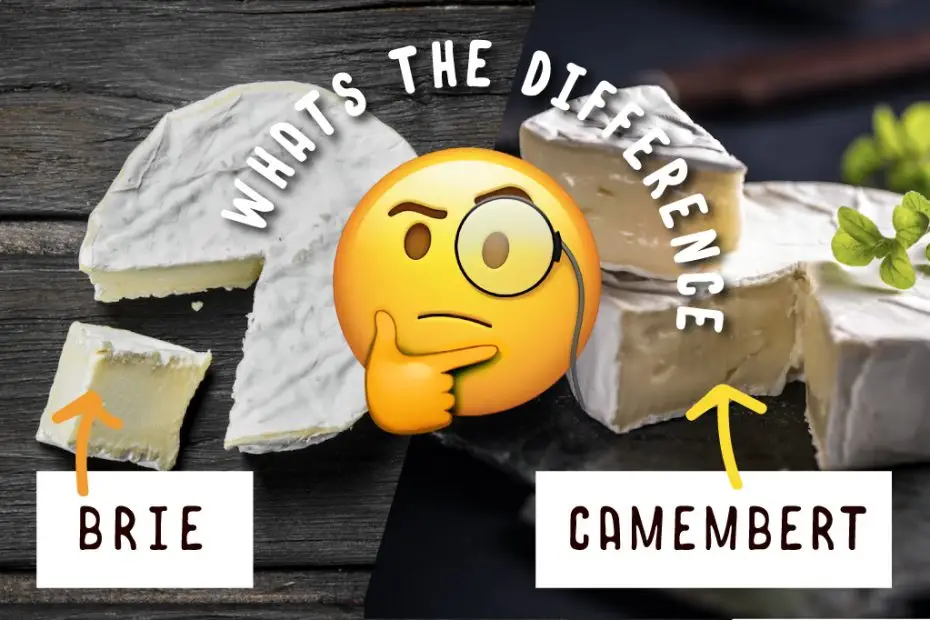When it comes to cheeses, these two are definitely beloved, but are they distinct? Could you look at a cheese tray and a party, and readily know the difference? If you would struggle to know the difference you are not alone! So let’s get into it, Camembert versus Brie, what’s the difference…
Brie and Camembert are two delicious cheeses that certainly have plenty in common. Both originate from the north of France and are made from cow milk. They are known for creamy texture, mouth-watering flavour, and an edible rind. Since Brie and Camembert share many similar characteristics, how do you tell the difference when choosing Camembert versus Brie? There are some subtle differences to keep in mind next time you are deciding between the two.
What do they have in common?
Firstly, Brie and Camembert are both traditional soft cheeses originating from France. Moreover, the AOP (think of it as a protected designation of origin) dictates that for a cheese to bear either name, it has to be made with raw cow’s milk. Furthermore, both cheeses have a white natural bloomy rind. The rind is edible and comprises mostly of Penicillium camemberti.


"Spoiler Alert… Not all French soft cheeses are the same"
Location
They come from different parts of France. Brie can only be made in the Northeast of France within the specified regions of Île-de-France, Seine-et-Marne, Loiret, Aube, Marne, Haut-Marne, Meuse, and Yonne. Besides, there are currently 2 Bries that bear an AOP stamp, Brie de Meaux and Brie de Melun.
On the other hand, Camembert comes from Normandie, in the North of France. Actually, whilst the name Camembert can be used by cheesemakers around the world, Camembert de Normandie is a protected name that is reserved exclusively for cheeses made according to strict specifications in the Normandie region.
History
Whilst Brie and Camembert are both traditional cheeses, they find their roots in different times.The recipe for Brie is actually much older, first appearing in 774, while Camembert is a much more recent creation. Earliest mentions of the latter effectively appeared in 1791.
Production
Although Brie and Camembert are born of similar techniques, there are a few differences in their production. The lactic starters, for instance, are stronger in Camembert than in Brie. This results in Brie having a milder flavour. Sometimes, cream is added to Brie during the cheese-making process, giving it a creamier texture.

What is Camembert?
Camembert cheese was originally founded in the 18th century and takes its name from the village in Normandy, France, where it was first made. Originally created using unpasteurised cow’s milk, these days it’s often made with pasteurised milk as regulations around raw milk prevent the former. You can distinguish a camembert from a brie by its size. How? Because camembert will always come in a small wheel with a diameter of roughly 8-10cm.

What is Brie?
Both brie and camembert are soft, creamy cheeses with an edible white rind, but you can tell a brie from a camembert because brie will be larger. Most brie comes in a decent size wheel and you’ll often see it sold in wedges. You wouldn’t get a wedge of camembert because the wheel is too small.
The Final Verdict
Yes, they do taste different. Brie tends to have a lighter savoury and buttery flavour with subtle notes of fruit and mushroom. Camembert, on the other hand, exhibits more pronounced earthy notes of mushroom, truffle.
— Brie is best served with warm crusty bread
— Camembert pairs beautifully with some crackers and hazelnuts
When it comes to picking a favourite, it’s your taste that counts, so head over to The Little Shop & try them both and see what you like best.



